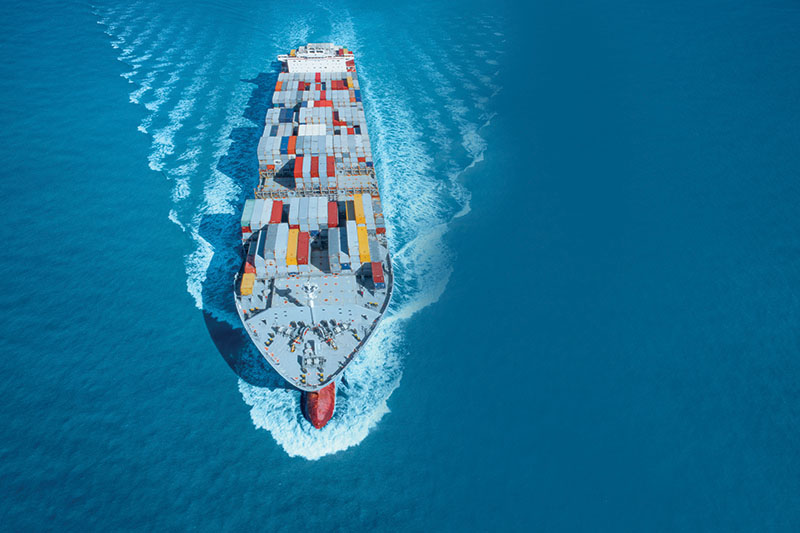Capacity, demand, and equipment outlooks make for challenging ocean container market
Just because 2020 is behind us does not, at all, mean there is no more craziness ahead of us in 2021.
That was something that came to mind, when reading a Tweet posted by Brian Bourke, Chief Growth Officer for Chicago-based 3PL and freight forwarder SEKO Logistics earlier this month.
Bourke’s Tweet reads as follows: “If you have containers from Asia, make bold decisions NOW. It is going to get worse before it gets better. If you see a good deal for expedited ocean that is 3x what you’d normally pay, book it. It’ll be the only container that will move and it’s still cheaper than air.”
Well, it is safe to say Bourke’s Tweeted observation got my attention, to say the least. And, in a subsequent conversation we had, it became clear that this elevated container pricing environment is not likely to abate anytime soon.
Bourke explained that Peak Season restocking efforts kicked off in earnest in the August-September period last year, which saw ocean rates start to climb, due to the need for restocking, coupled with, as he said, that “people were buying stuff and not experiences, and all of that stuff needs to be shipped.”
By “stuff,” Bourke was alluding to things like furniture, home décor, and fitness equipment, among other durable-type items, which over the course of the ongoing COVID-19 pandemic, were out of stock, in many cases, and with everyone restocking at the same time, it subsequently led to a huge backlog that still remains in effect today.
But he noted that the backlog comes with a caveat.
“Up until mid-December, it was a space issue,” he said. “You could not get space on vessels, whereas now it is an equipment issue and now there are no TEUs (Twenty-Foot Equivalent Units) available. You cannot book a TEU; they are almost at expensive as Forty-Foot Equivalent Units (FEU) containers, and you cannot get containers out of the Ports of Los Angeles and Long Beach unless you bring the empty container with you…it is really crazy. What we are telling people is if you want to get a container here, pay the 3X amount because then it will ship
Otherwise, you will keep getting rolled and have to ship it via airfreight anyway so you might as well make a bold decision now and your container will arrive—otherwise it is going to sit and sit and the situation is only going to get worse before it gets better heading up to the Lunar New Year. This situation is not going away—the number of empties going back to China is up 55% annually. It is crazy, and it makes it hard for shippers to prepare with carriers turning containers around so quickly.”
Bourke’s sentiment was echoed by Chris Rogers, research director for global trade intelligence firm Panjiva.
Rogers explained that the current situation has put things at what he called the absolute point of shortage, given how scarce capacity currently is.
“If capacity goes to zero, then the marginal costs go into that,” he said.
“There are containers on order, and they are on the way….and we are heading into the contracting season. I get why customers want to be conservative, but it feels like the gains in spot prices may be reflecting a short-term dynamic. The bigger thing for the contracting season this year is actually going to be where things stand in terms of different surcharges
Aside from the massive rally in basic shipping rates, there is also the emergence of all of these empty container surcharges and chassis deficit surcharges, as well as fuel surcharges likely to head up again now that oil prices are recovering. And in due course there is going to be carbon pricing to be included in European-origin shipping rates as well.
What’s more, Rogers said BCOs (beneficial cargo owners) want to want to talk about price but also about certainty and getting these surcharges out of the equation. But the pressure the industry is seeing from organizations like the Federal Maritime Commission (FMC) and counterparts in other countries, including China, is kind of heading towards that end as well, he noted.
Bourke's Tweet regarding the tripling of container rates was fully corroborated by George Griffiths, editor Global Container Freight Market, Dry Bulk Shipping, for S&P Global (formerly Platts).
And the reason that is the case, according to Griffiths, is demand has shot up to a degree that there is really no capacity in the system.
“Ocean liners are pretty much maxed out, in terms of utilization, and, even then, rates are still going up, with demand still outweighing what we have previously seen. It is part of an ongoing self—perpetuating cycle and it is really stuck on back of demand being really strong around the world.”
Taking that a step further, Griffiths explained that on one hand global demand is strong and is countering various load levels of imports and exports that occurred over the first half of 2020, when the pandemic first kicked in and Chinese manufacturing was off line.
Another factor is related to the equipment shortage, he said.
“What used to take a container entering a port a couple days to get turned around into a full empty and be re-exported is now taking two-to-three weeks with everyone sheltering in place and staying at home,” he said. “What that means is that lots of these containers that would normally be on the ocean themselves are pretty much stuck on land, so that means there are fewer empty containers than there are exports and it becomes an ongoing cycle in that there are not many empty containers going around.”
These respective observations highlight how things remain different, or perhaps muddled, on the ocean container shipping front. Many questions remain intact, but it stands to reason they may be easier to answer as we eventually move past the pain of the pandemic.













